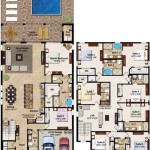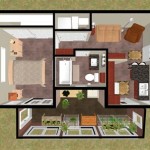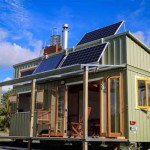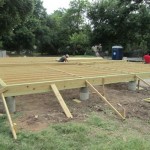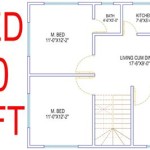A Mansion House Plan is a detailed architectural plan that outlines the design and construction of a large, opulent residence, typically called a mansion. It encompasses the blueprint and specifications for the entire property, including its floor plan, exterior design, and interior layout. One notable example is the Biltmore Estate in Asheville, North Carolina, which was built in the late 19th century and boasts over 250 rooms spread across four floors.
Mansion House Plans are meticulously crafted to cater to the specific needs and desires of the owners. They often feature grand entrances, multiple living areas, formal dining rooms, and lavish bedrooms. Additional amenities such as libraries, home theaters, swimming pools, and tennis courts are also commonly incorporated into the design. The level of detail in these plans ensures that every aspect of the mansion is carefully considered and executed to the highest standards.
In the following sections, we will delve deeper into the intricacies of Mansion House Plans, exploring their various components, design considerations, and the construction process involved in bringing these architectural masterpieces to life.
Mansion House Plans are defined by their grandeur and comprehensive design, incorporating the following key elements:
- Expansive Floor Plans
- Multiple Living Areas
- Formal Dining Rooms
- Lavish Bedrooms
- Luxurious Amenities
- Custom Architectural Details
- Sustainable Design Features
- Smart Home Technology
These plans are meticulously crafted to meet the unique requirements of each client, resulting in truly exceptional and personalized living spaces.
Expansive Floor Plans
Mansion House Plans are renowned for their expansive floor plans, which offer a sense of grandeur and provide ample space for both living and entertaining. These plans typically encompass multiple levels, with each level dedicated to specific functions and amenities.
- Open and Airy Living Spaces: Expansive floor plans prioritize open and airy living spaces that promote a sense of flow and spaciousness. Large windows and high ceilings allow for an abundance of natural light, creating a bright and inviting atmosphere.
- Multiple Living Areas: To accommodate the diverse needs of mansion owners, these plans often incorporate multiple living areas, including formal living rooms, family rooms, and dens. Each living area is designed with a specific purpose in mind, providing spaces for both relaxation and entertainment.
- Grand Dining Rooms: Formal dining rooms are a hallmark of Mansion House Plans. These rooms are designed to host lavish dinner parties and special occasions, featuring elegant chandeliers, elaborate moldings, and seating arrangements that can accommodate large gatherings.
- Lavish Bedrooms: The bedrooms in Mansion House Plans are equally impressive, offering luxurious retreats for rest and relaxation. Master suites often include private balconies or patios, spacious walk-in closets, and opulent bathrooms with soaking tubs and separate showers.
Expansive floor plans are not merely about size; they are carefully designed to create a cohesive and functional living environment that meets the unique needs and aspirations of mansion owners.
Multiple Living Areas
Mansion House Plans prioritize multiple living areas to accommodate the diverse needs and preferences of mansion owners. These areas are carefully designed to provide spaces for both formal and informal gatherings, relaxation, and entertainment.
Formal Living Rooms: Formal living rooms are the grandest of all living areas in a mansion. They are typically located on the main floor and are designed to impress guests with their opulent dcor and elegant furnishings. Formal living rooms are often used for special occasions such as parties, receptions, and holiday gatherings.
Family Rooms: Family rooms are the more casual and comfortable living areas in a mansion. They are typically located on the ground floor or in a separate wing of the house and are designed for everyday use by the family. Family rooms often feature comfortable seating, a fireplace, and a television.
Dens: Dens are smaller, more intimate living areas that are often used for reading, watching television, or playing games. They are typically located on the upper floors of a mansion and offer a more private and cozy setting.
Libraries: Libraries are another common feature of Mansion House Plans. They are typically located on the main floor or in a separate wing of the house and provide a quiet and comfortable space for reading and studying. Libraries often feature built-in bookshelves, comfortable seating, and a fireplace.
Formal Dining Rooms
Formal dining rooms are a hallmark of Mansion House Plans, designed to accommodate lavish dinner parties and special occasions. These rooms are characterized by their grand proportions, elegant dcor, and exquisite furnishings.
Size and Layout: Formal dining rooms are typically the largest dining areas in a mansion, capable of seating 12 or more guests comfortably. They are often located on the main floor, adjacent to the kitchen and other entertaining spaces. The layout of the room is carefully planned to ensure that guests can easily navigate the space and that the serving staff has ample room to move around.
Architectural Details: Formal dining rooms are often adorned with elaborate architectural details that create a sense of grandeur and sophistication. These details may include intricate moldings, high ceilings with decorative plasterwork, and large windows that flood the room with natural light. Some formal dining rooms also feature fireplaces or chandeliers to enhance the ambiance.
Furnishings and Dcor: The furnishings and dcor of a formal dining room are carefully chosen to complement the architectural style of the room and create a cohesive and inviting atmosphere. The table is typically the centerpiece of the room, often made of fine wood and adorned with intricate carvings or inlays. Chairs are upholstered in elegant fabrics and may feature elaborate designs. The room is often decorated with artwork, mirrors, and other decorative objects that reflect the owner’s personal taste and style.
Lavish Bedrooms
Mansion House Plans feature lavish bedrooms that are designed to provide the ultimate in comfort and luxury. These bedrooms are typically located on the upper floors of the mansion and offer stunning views of the surrounding landscape.
- Spacious and Private: Lavish bedrooms are designed to be spacious and private, offering a sanctuary for rest and relaxation. They are typically large enough to accommodate a king-size bed, multiple pieces of furniture, and a sitting area. The bedrooms are also designed to be private, with features such as soundproofing and blackout curtains to ensure a peaceful night’s sleep.
- Opulent Furnishings: The furnishings in lavish bedrooms are opulent and luxurious. The beds are typically dressed in fine linens and feature elaborate headboards and footboards. The other furniture in the room, such as dressers, nightstands, and chairs, is often made of fine wood and adorned with intricate carvings or inlays. The overall effect is one of elegance and sophistication.
- En-Suite Bathrooms: Lavish bedrooms typically feature en-suite bathrooms that are just as luxurious as the bedrooms themselves. These bathrooms are often larger than the bedrooms and feature high-end fixtures and finishes. They may include features such as soaking tubs, separate showers, double vanities, and heated floors. Some en-suite bathrooms even have their own dressing areas or fireplaces.
- Walk-In Closets: Many lavish bedrooms also feature walk-in closets that are designed to provide ample storage space for clothing, shoes, and accessories. These closets are often outfitted with custom shelving and lighting to ensure that everything is organized and easy to find.
The lavish bedrooms in Mansion House Plans are truly a sight to behold. They offer the ultimate in comfort, luxury, and privacy, providing mansion owners with a truly regal sleeping experience.
Luxurious Amenities
Mansion House Plans often incorporate a range of luxurious amenities that are designed to enhance the comfort, convenience, and enjoyment of the owners. These amenities can include:
- Swimming Pools: Swimming pools are a popular amenity in Mansion House Plans, especially in warmer climates. They can be located indoors or outdoors, and may feature waterfalls, slides, and other water features. Some pools are even equipped with underwater lighting and sound systems to create a truly luxurious experience.
- Tennis Courts: Tennis courts are another common amenity in Mansion House Plans. They can be located on the property or at a nearby club. Tennis courts provide a great way to stay active and enjoy the outdoors.
- Home Theaters: Home theaters are a great way to enjoy movies, TV shows, and sporting events in the comfort of your own home. Mansion House Plans often feature dedicated home theaters that are equipped with state-of-the-art audio and video equipment. Some home theaters even have tiered seating and popcorn machines.
- Wine Cellars: Wine cellars are a great way to store and age wine. Mansion House Plans often feature climate-controlled wine cellars that can accommodate hundreds or even thousands of bottles. Some wine cellars even have tasting rooms where you can sample your collection with friends and family.
These are just a few of the many luxurious amenities that can be incorporated into Mansion House Plans. With careful planning and execution, these amenities can help to create a truly exceptional living experience.
Custom Architectural Details
Mansion House Plans often incorporate custom architectural details that add a unique and personal touch to the home. These details can range from subtle embellishments to grand, show-stopping features.
- Ornate Moldings and Millwork: Custom moldings and millwork can add a touch of elegance and sophistication to any room. These details can be used to frame doorways and windows, create decorative cornices and baseboards, and add visual interest to walls and ceilings.
- Arches and Vaulted Ceilings: Arches and vaulted ceilings can add a sense of grandeur and spaciousness to a room. Arches can be used to create dramatic entryways and passageways, while vaulted ceilings can make a room feel taller and more.
- Custom Staircases: Custom staircases are a beautiful and functional way to connect different levels of a mansion. These staircases can be made from a variety of materials, including wood, stone, and metal, and can be designed to match the overall style of the home.
- Unique Rooflines: Custom rooflines can add visual interest and character to a mansion. These rooflines can be simple or complex, and can incorporate a variety of different shapes and angles.
These are just a few of the many custom architectural details that can be incorporated into Mansion House Plans. With careful planning and execution, these details can help to create a truly exceptional and unique home.
Sustainable Design Features
In recent years, there has been a growing interest in sustainable design for Mansion House Plans. Sustainable design seeks to minimize the environmental impact of a building while also creating a healthy and comfortable living environment. There are many different sustainable design features that can be incorporated into Mansion House Plans, including:
- Energy Efficiency: Energy-efficient features can help to reduce the amount of energy consumed by a mansion, which can lead to lower utility bills and a smaller carbon footprint. Some common energy-efficient features include:
- High-performance windows and doors
- Insulated walls and ceilings
- Energy-efficient appliances
- LED lighting
- Solar panels
- Water Conservation: Water conservation features can help to reduce the amount of water used by a mansion, which can lead to lower water bills and a smaller environmental impact. Some common water conservation features include:
- Low-flow toilets and faucets
- Rainwater harvesting systems
- Drought-tolerant landscaping
- Indoor Air Quality: Indoor air quality is important for the health and well-being of the occupants of a mansion. Sustainable design features can help to improve indoor air quality by:
- Using low-VOC (volatile organic compound) paints and finishes
- Installing air purifiers
- Providing adequate ventilation
- Sustainable Materials: Sustainable materials are materials that are produced in a way that minimizes environmental impact. Some common sustainable materials include:
- Recycled materials
- Renewable materials
- Locally sourced materials
By incorporating sustainable design features into Mansion House Plans, architects can help to create homes that are more environmentally friendly, more comfortable, and healthier for the occupants.
Smart Home Technology
Smart home technology is becoming increasingly popular in Mansion House Plans. This technology allows homeowners to control various aspects of their home from a central location, such as their smartphone or tablet. Smart home technology can be used to enhance security, convenience, and energy efficiency.
Security: Smart home technology can be used to improve security in a number of ways. For example, homeowners can install smart locks that can be locked and unlocked remotely. They can also install security cameras that can be monitored from anywhere in the world. Additionally, smart home technology can be used to set up motion sensors and alarms that will alert homeowners to any suspicious activity.
Convenience: Smart home technology can also make life more convenient for homeowners. For example, homeowners can use smart thermostats to control the temperature of their home remotely. They can also use smart lighting to control the lights in their home from anywhere in the world. Additionally, smart home technology can be used to control appliances, such as ovens and refrigerators, remotely.
Energy Efficiency: Smart home technology can also help homeowners save energy. For example, homeowners can use smart thermostats to program their heating and cooling systems to be more efficient. They can also use smart lighting to turn off lights when they leave a room. Additionally, smart home technology can be used to monitor energy usage and identify areas where homeowners can save energy.










Related Posts

